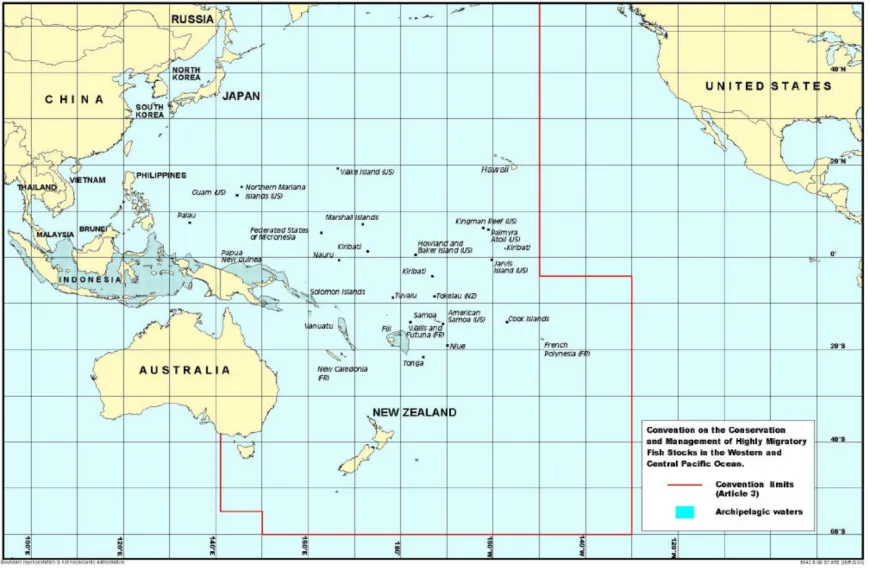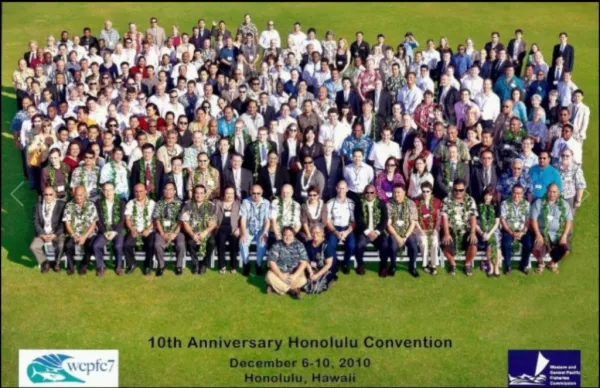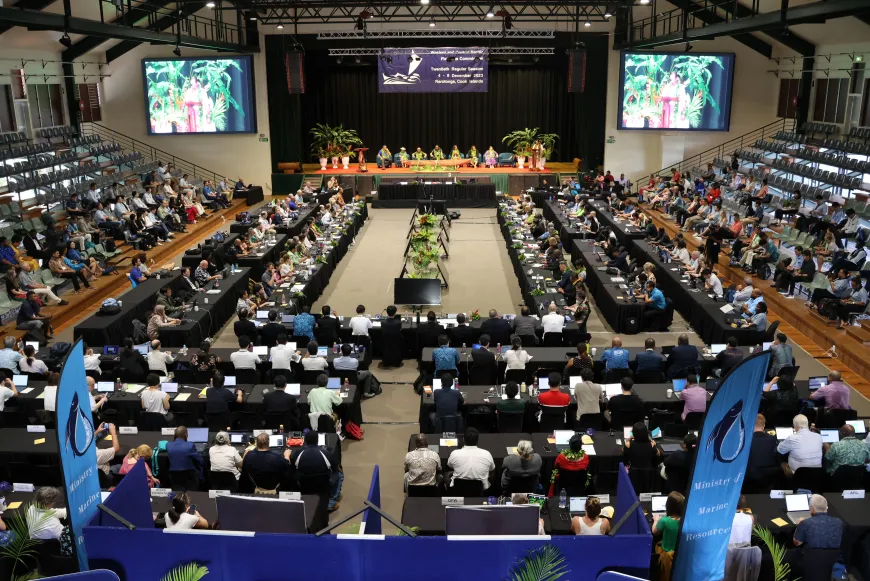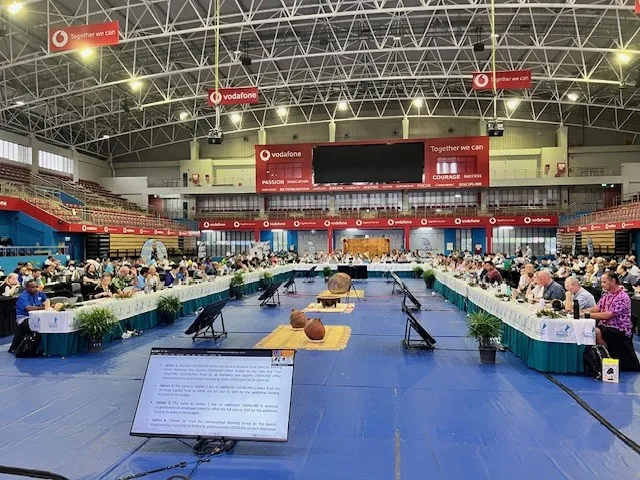1994-2000
Setting the Stage
These six years mark the development and official adoption of the WCPFC framework. The aim was to foster and promote cooperation between the Pacific small island developing States and the major fishing nations operating in the region, on the development of measures to control fishing for the highly migratory fish stocks that moved between the high seas and areas of national jurisdiction.
1994: MHLC1 - the first meeting under the Multilateral High-Level Conference on Highly Migratory Fish Stocks (MHLC) in the Western and Central Pacific Ocean.
1997: Majuro Declaration adopted, reflecting agreement by negotiating parties to pursue a new tuna commission.
2000: Negotiations through the MHLC completed and adoption of the Western and Central Pacific Fisheries Convention in Honolulu, Hawaii.
2001-2004
Commission Establishment & Foundational Rules
The Convention entered into force on March 19, 2004, following a series of preparatory conferences, marking the official creation of the Commission. This was a significant milestone in international fisheries management, focusing on the sustainable management of highly migratory fish stocks like tuna, sharks, and billfish in the region.
At its inaugural session in December 2004 at its headquarters in Pohnpei, Federated States of Micronesia, WCPFC turned the Convention text into a functioning body with legal, financial, and procedural machinery.
- 2004 (WCPFC1)
- Adopted budget and financial regulations, the Commission logo, and its first resolution on Conservation and Management Measures (CMMs)
- Adopted Rules of Procedure for decision-making
- Finalized operational procedures from the Preparatory Conference (PrepCon):
- Annex I: vessel records & fishing-authorization procedures
- Annex II: cooperating non-member procedures
- Annex III: vessel marking & identification specifications

2005-2007
First Species-Specific Measures & Monitoring Tools
This period saw WCPFC’s initial roll-out of both target-species management and the compliance & surveillance systems needed to enforce them. The adoption of measures to reduce fishing impacts on sharks in 2006 marked WCPFC as one of the first international agreements to address shark conservation at the regional fisheries management organization (RFMO) level.
- 2005:
- First tropical tuna measure (bigeye & yellowfin)
- South Pacific and North Pacific albacore measures
- 2006:
- Launched the IUU vessel list, Vessel Monitoring System (VMS), Regional Observer Programme (ROP), and High Seas Boarding & Inspection (HSBI) scheme
- First Seabird measure; first shark measure; striped marlin measure
2008-2010
Expanding Conservation & Compliance
Building on earlier species measures, WCPFC broadened its scope, tackling gear impacts, new species, and refining its peer-review compliance process. It also conducted its first detailed stock assessment of bigeye tuna, which helped inform future management decisions regarding sustainable harvest levels for this species.
- 2008:
- Ban on large-scale driftnets in the high seas
- Measures for sea turtles and swordfish
- Small Island Developing States (SIDS) Resolution
- 2009: Pacific bluefin tuna (PBF) measure
- 2010: Introduction of the Compliance Monitoring Scheme

2011-2013
Ecosystem & Regional Focus
These years reflect a shift towards ecosystem-level protection and stronger recognition of SIDS’ needs within the Commission’s mandates. A significant milestone in 2012 was the adoption of the Tropical Tuna Conservation and Management Measure (CMM 2012-01), which introduced catch limits and stricter controls on fishing practices to address the declining stocks of bigeye tuna at that time.
- 2011: Cetaceans measure
- 2012: Revised tropical tuna measure added skipjack, alongside bigeye & yellowfin
- 2013: Additional SIDS-focused measures
2014-2016
Strategic Management & Safety Enhancements
Introduction of harvest strategies marked a move from single-species limits to more adaptive, outcomes-based management, while observer safety addressed human dimensions.
- 2014: Adoption of Harvest Strategy approach
- 2015: Skipjack Target Reference Point (TRP) established
- 2016: Observer Safety measure
2017-2019
Compliance, Pollution & Emerging Issues
This phase saw WCPFC tackle broader threats like pollution, port-state enforcement, and climate impacts, while adding protections for additional bycatch species. The WCPFC also updated its conservation and management measure for tropical tunas, which introduced new catch limits and stricter measures on fishing, particularly concerning the management of bigeye and yellowfin tuna, further strengthening the sustainability goals for the region's tuna fisheries.
- 2017:
- Marine Pollution CMM
- Port State Measures adopted
- 2019:
- Mobulid & manta rays CMM
- Climate Change Resolution

2020-2024
Social Standards and Climate Change
The WCPFC becomes the first tuna RFMO to adopt a measure that sets standards for the protection and treatment of people working on board fishing vessels in the region, reflecting growing attention to crew welfare and human rights in fisheries management. The WCPFC also adopted a workplan to guide its efforts to incorporate climate change impacts and considerations into fisheries management decisions.
- 2024: Crew Labour Standards CMM and climate change workplan
